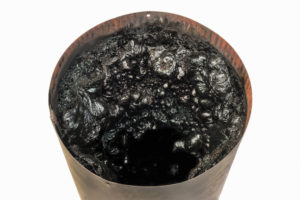The Dangers of Creosote and How to Reduce Fire Risk
If you are new to fireplaces and chimneys, the mysterious creosote may be intimidating. The truth is that creosote is bothersome and can be quite dangerous, but it is manageable.
What is Creosote?
When organic fuel like oil, gas, and wood are burned byproducts are released into the chimney. As vapor and soot is pulled up the chimney, the soot clings to the flue liner and coats it. As this soot builds up, it becomes a substance known as creosote. Through a process of high heat melting the creosote followed by cooling, glazed creosote is created. Glazed creosote is not only highly flammable, but it can obstruct the flue completely if left to build.
How to Reduce Fire Risk
In order to avoid creosote buildup and increased risk of fire, keep these things in mind while enjoying your fire this winter.
- Chimney Sweeps and Inspections
It is recommended by the National Fire Protection Association (NFPA) and the Chimney Safety Institute of America (CSIA) to schedule regular chimney sweeps and annual chimney inspections to avoid increased risk of fire. - Choosing Proper Wood
Wood should be properly seasoned, or dried, in order for it to burn completely, and more cleanly, with less byproduct. Choosing the right wood for your appliance or fireplace will make it easier to burn a high-temperature fire, thereby decreasing creosote left behind after burning. - Monitor Your Chimney System
Monitor your firebox and flue for signs of creosote buildup and schedule a chimney sweep before your creosote becomes a problem. This makes it easier and cheaper to remove, while also lowering fire risk.
Hiring a Professional
There are chemical cleaning products on the market that promise creosote removal, but these products cannot replace regular chimney maintenance by a CSIA Certified Chimney Sweep® (CCS). Chief Chimney Services is experienced in glazed creosote removal and can do so using brushes and tools as well as chemicals that are safe for use inside the home and will not affect your family. A Chief Chimney sweep will assess the creosote before forming a removal plan. If the creosote is moist, a chemical will be applied in order to allow the tools and brushes to work. The creosote is removed with the use of tools, brushes, and a high-powered vacuum. A professional knows the importance of safety and comfort. Our services will be as timely as possible, and with as little disruption to your home as possible. Hiring a professional is a necessity, and here at Chief Chimney Services we aim to offer the best services in Suffolk County, Long Island.
If you have questions or concerns about creosote, or want to schedule services for your chimney, call Chief Chimney Services at 631-863-2460 or request an appointment online today.
